Reflections on the 60th Venice Biennale: Art at the Edge of Imagination
During my stay in Italy, I became aware that the Venice Biennale was being held this year (2024) beginning April. I quickly made plans to visit the city since the next one isn’t until 2026. Every even year, Venice becomes a renowned player within the global art scene hosting the Venice Biennale. For a small city surrounded by water, this is a huge feat to undertake every two years …. becoming the “world’s pre-eminent stage for new contemporary art.” This year, its 60th International Art Exhibition’s theme and title is “Stranieri Ovunque—Foreigners Everywhere.” What better theme or topic to request of artists throughout the world for their interpretations? For art lovers who haven’t planned any travel yet, there is still time to catch this universal exhibition ending by November 1st. Here’s what I learned…
First a Bit of History
The Venice Biennale was founded in 1895, the first and oldest art show of its kind and has continuously evolved from its humble beginnings of exhibiting only European artists to today’s 75+ countries. In fact, the Biennale was canceled only during World War II and the pandemic. Over the decades, the Biennale has expanded to include the following art forms: theater, film and music, although it is mostly known for its visual exhibitions. There has been quite a few changes in its format and scale, becoming more thematic with the creation of pavilions used mostly by international countries. Interestingly, in the last 20+ years there has been a growth of biennales in other countries competing with Venice. Reasons are: a) attracting more tourism to their country; b) reviving underutilized spaces in urban cities and; c) improving diplomatic relationships with other countries. As can be expected in the world of art, the Biennale has had a number of controversies over many of its art exhibits and the usual political posturing.
The Growing Importance of Art Fairs And Biennales
As a lover of all types of art venues, I find art fairs and, to a certain extent, biennales the most equitable platform for artists and art galleries of every conceivable type to have a door open. These art venues a) capture what artists are doing internationally; b) they feed into the evolution of contemporary art; c) they offer opportunities to indigenous groups, women, minorities and LBGTQ communities and; d) increase the production and distribution of art. Something that museums and galleries alone cannot do or do as well.
Why Attend Art Fairs or Biennales?
You may be asking, what is the difference between the two. Art fairs have a commercial goal to sell, whereas biennales are more culturally purposeful without the sale. Biennales may have many more large-scale art installations and have significantly long exhibition schedules such as in Venice, which can run up to 6 months. Besides, the fact that biennales are held every two years. Why attend an art fair or a biennale?
They foster a stimulating, creative environment that inspires.
Galleries from all over the world, are all in one central location
They expose you to new artistic trends and designs in the Art World that are continuously changing.
Lots of cool art and exciting people doing uniquely innovative, sometimes quirky or controversial.
Lots of fashionistas to watch, sometimes they are the show.
Lots of selfies to take with your favorite art piece.
Lastly, the opportunity to buy art as long as it doesn’t set you back six months.
So, What About This Year’s Venice Biennale?
Unlike many other international art fairs, the Venice Biennale remains open to the public from April through November 1st. A sum of 88 pavilions from 75 countries are spread throughout Venice, interpreting this year’s theme. Besides visiting the Arsenale and Giardini where the largest exhibitions are housed, together I probably got to view about 30-40 pavilions — it was a bit exhausting.
I found the Biennale’s theme “Stranieri Ovunque—Foreigners Everywhere” to be provocative and timely. Yet there were a number of exhibitions that did not quite read the memo. Many tackled the issues of migration, isolation, being different, being LGBTQ, racism, loneliness, and more. But there were quite a bit of artists that were doing something entirely different. I found out later that it was common and allowable. Participation is not only based on the theme.
I was impressed by the scale of so many of these exhibitions covering an entire room, sometimes two. Many were quite provocative, some were quirky and others were just plain confusing, while many were boring…but then that is what art is all about. The Biennale truly represented foreigners everywhere in its diversity of artists and countries.
I very much like the idea of having a number of pavilions spread throughout the city’s historic buildings that have been vacant for some time, giving new life to these places. The searching for pavilions made the experience even more interesting and a lesser chance of being overstimulated from too many works in one place at that Arsenale and Gardini, the two main exhibition halls (once a naval building).
If you plan to attend this year’s Biennale, it is essential to purchase the “My Art Guide Venice 2024 “to better navigate the city in finding these pavilions along with a description of the artists’ works. I could not have seen as many pavilions without the book. I plan to keep mine as part of my art book collection. The guidebook also offers information on places to stay and eat as well.
If you cannot fly to Venice, you may want to consider spending the first week of September at New York City Art Week. Not the same as Venice, but NYC is always worth a visit. Click here for links to this year’s shows.
The photos are a mix of artworks from many of the pavilions. Not all of them I liked, but mostly found them interesting or easy to photograph. This represents a tiny amount of the artworks I got to see. As always, click the center of the photo for a full view of each photograph.

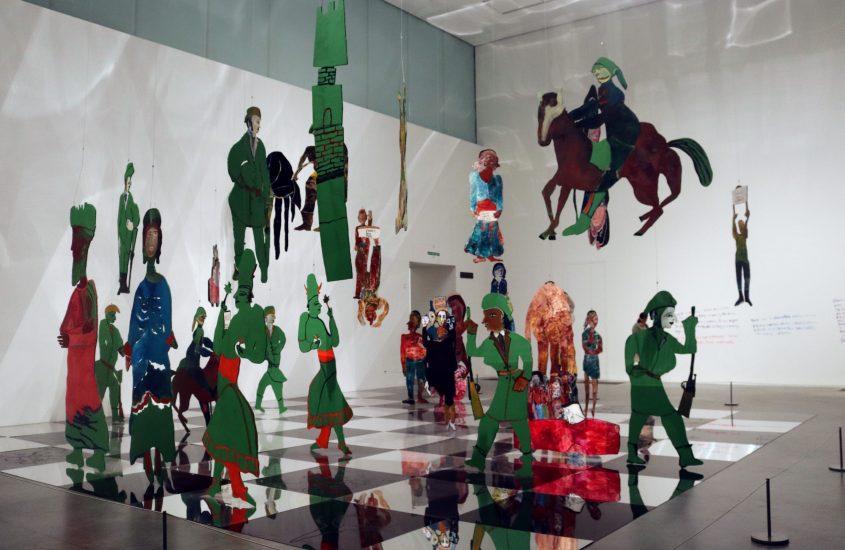
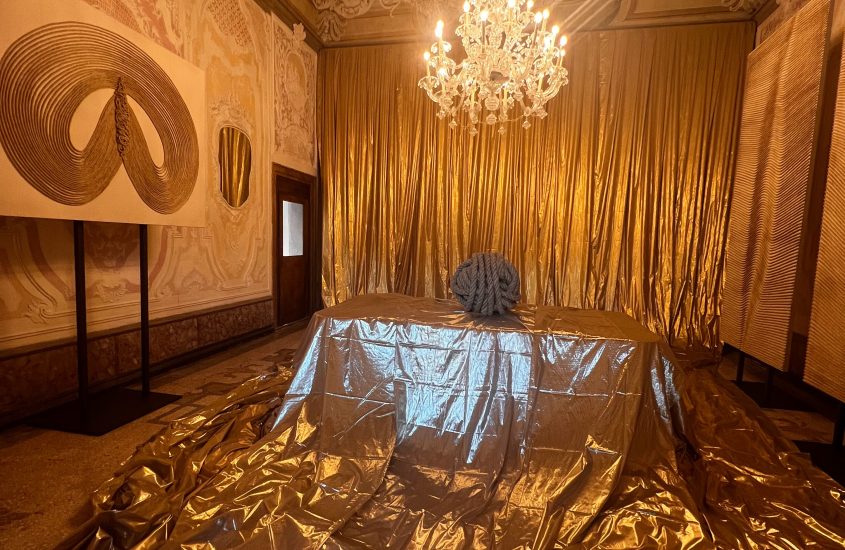
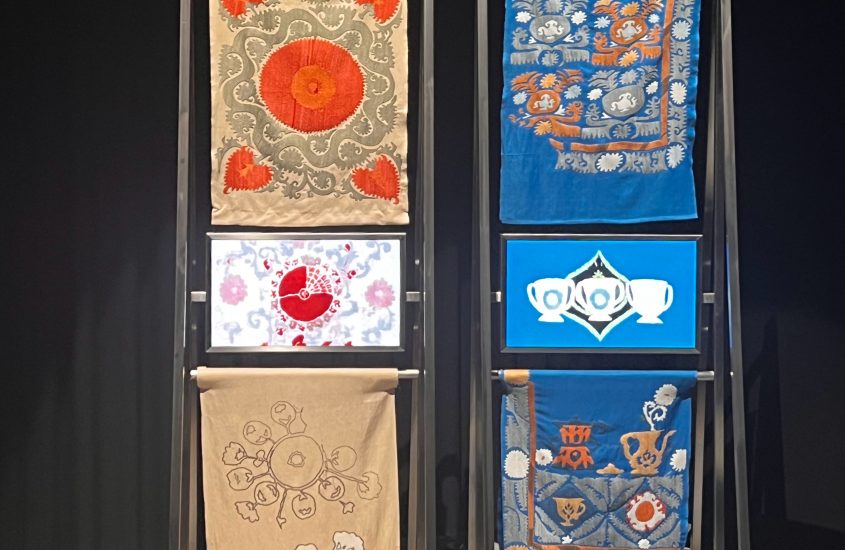

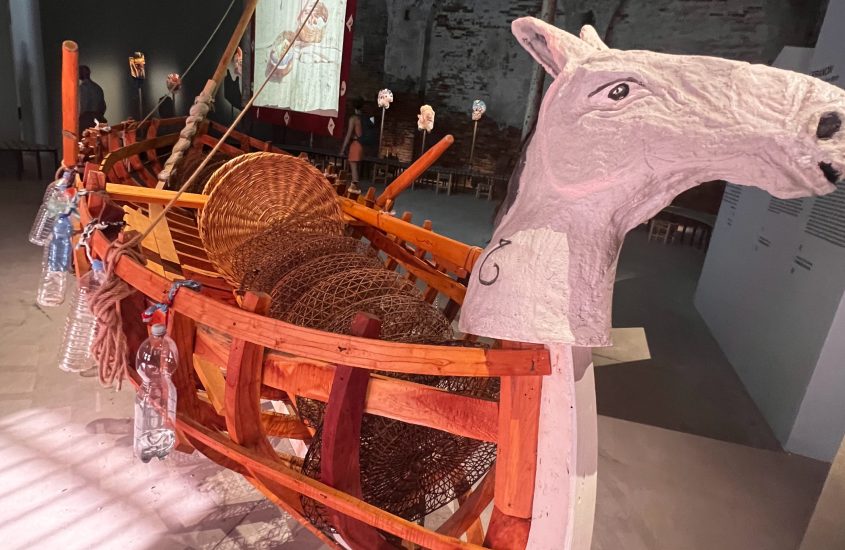
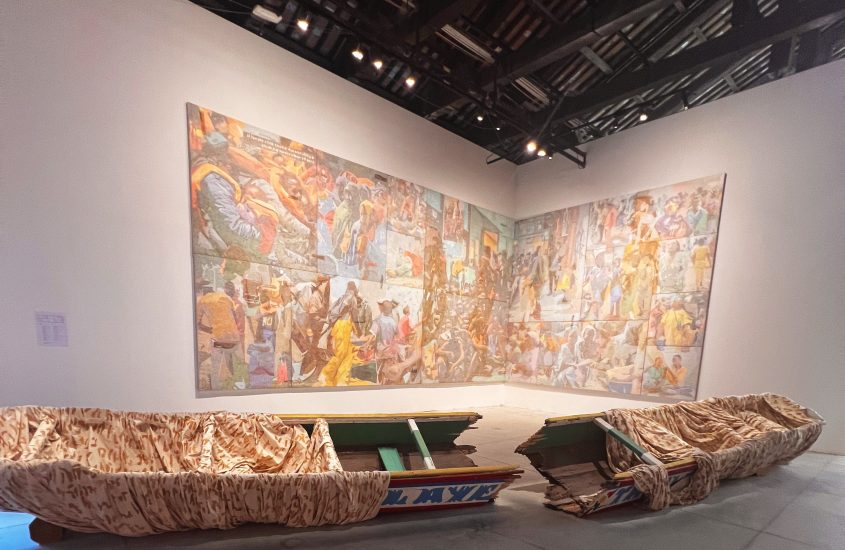
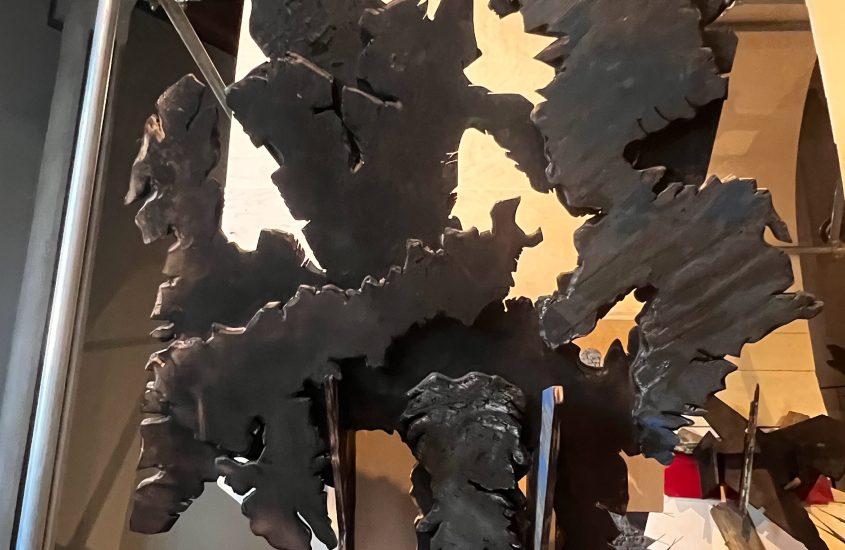
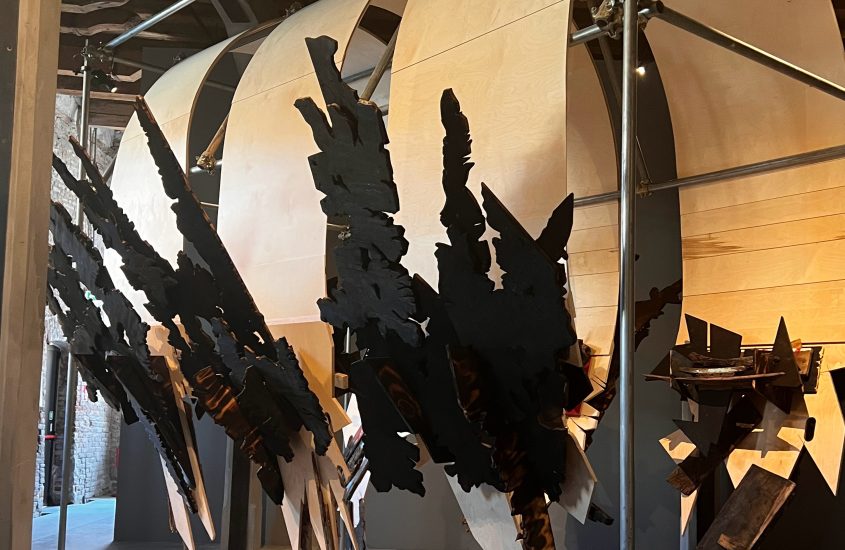
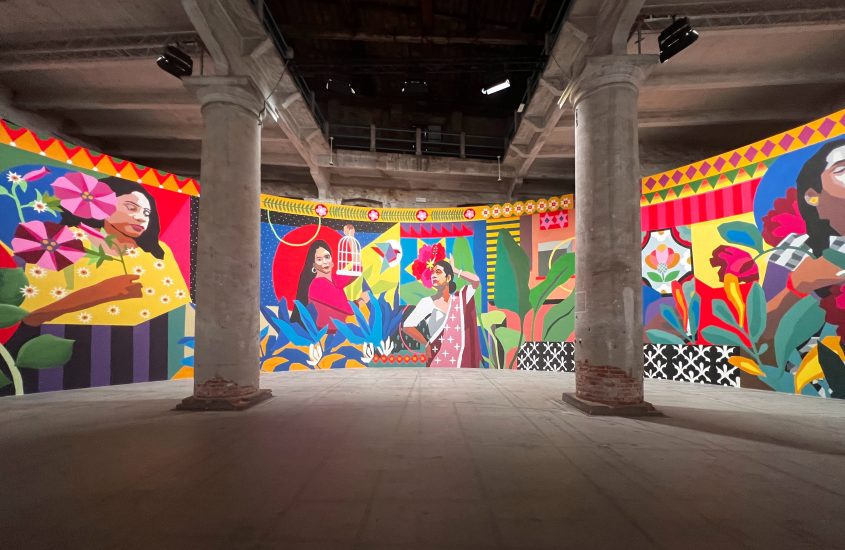
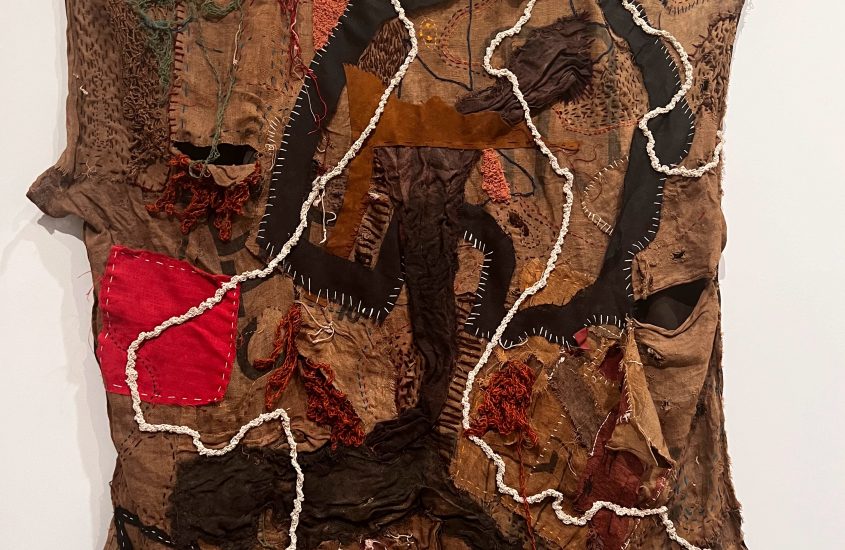
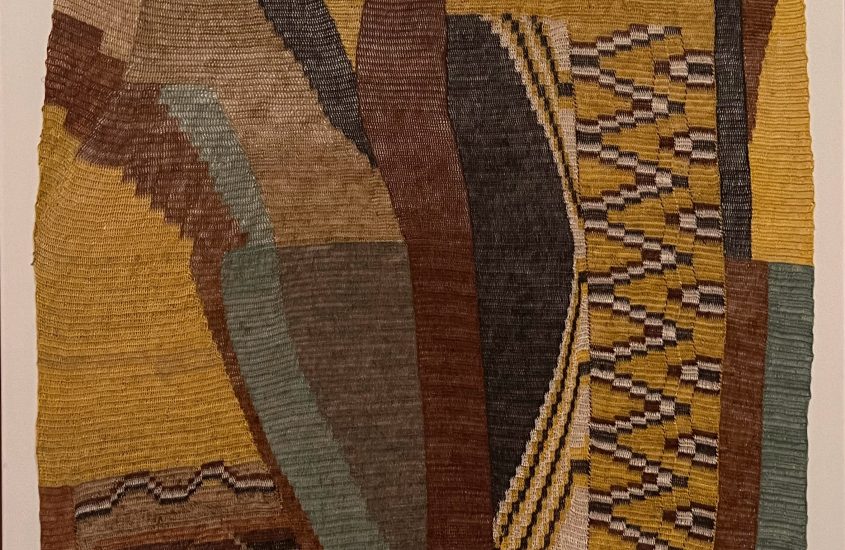
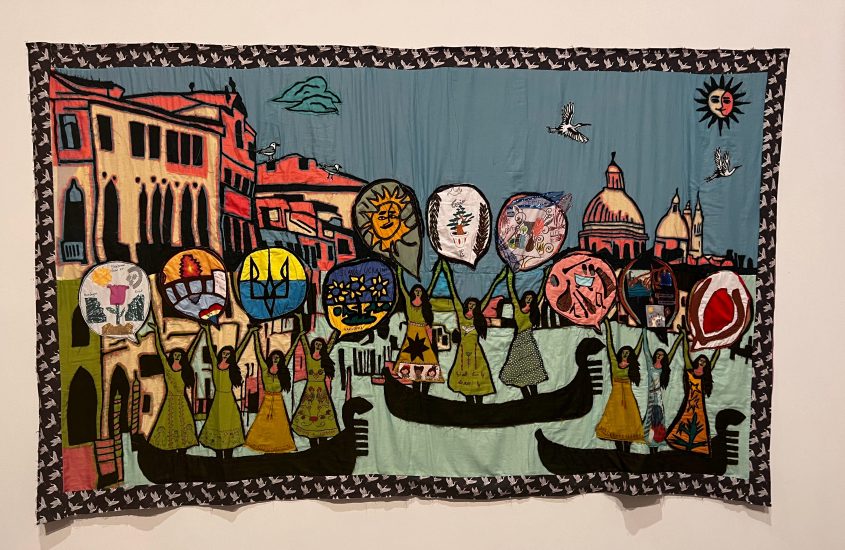
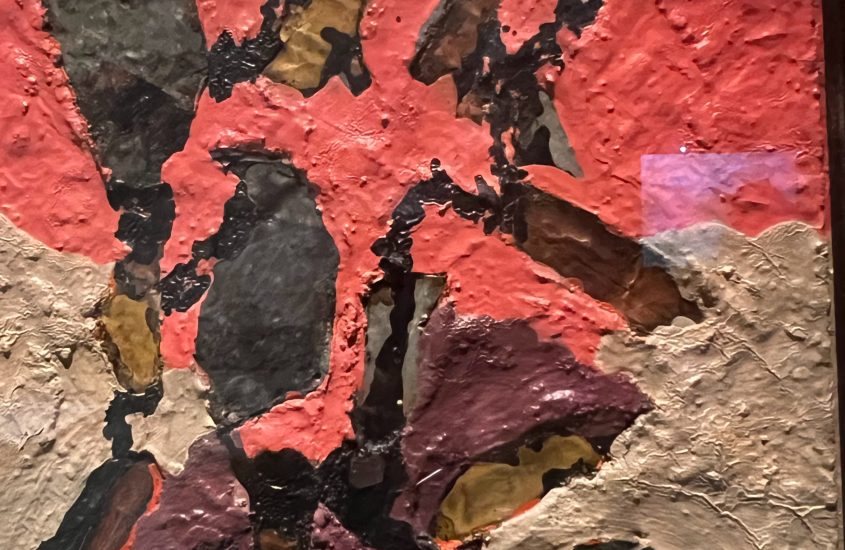
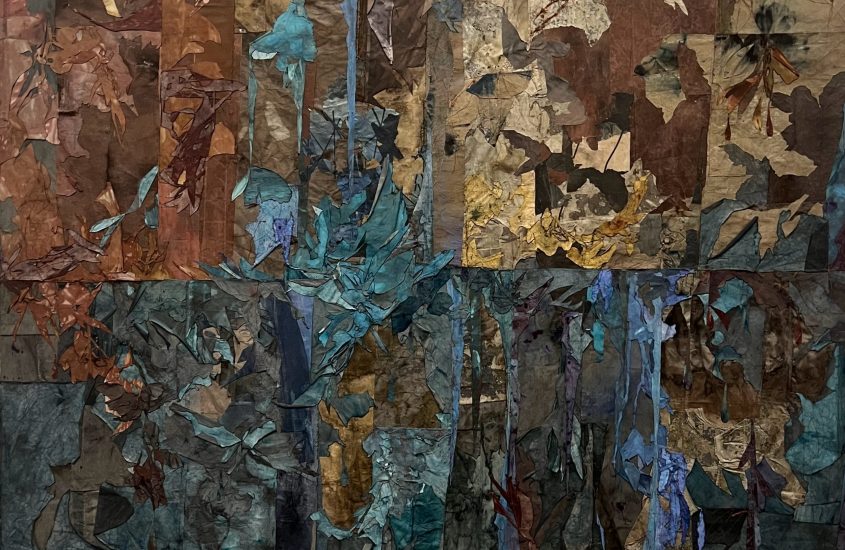
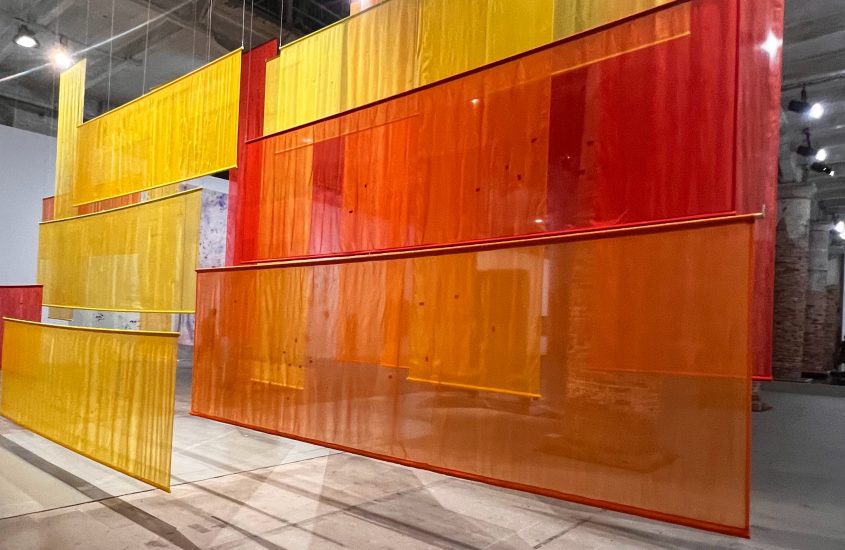
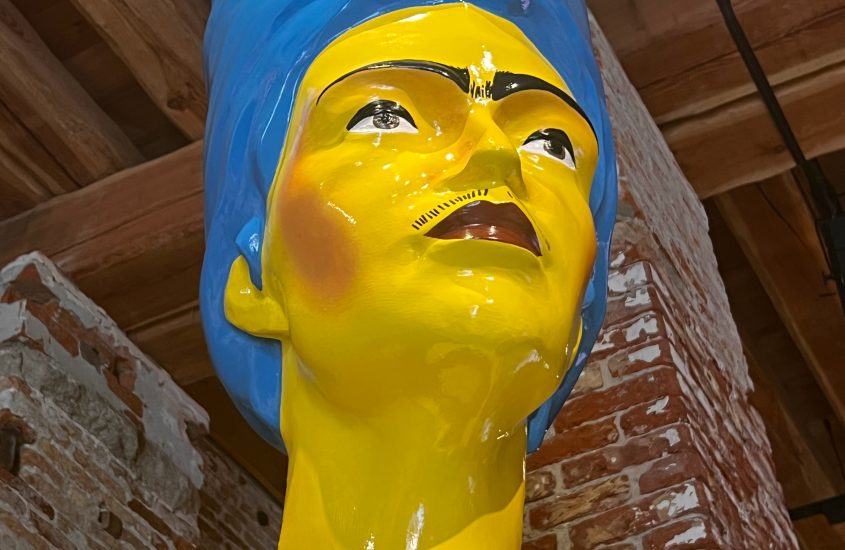
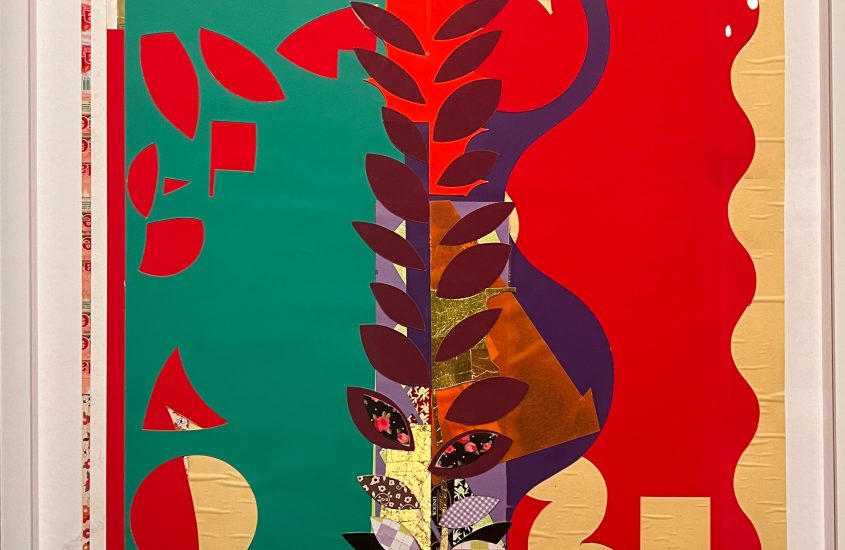
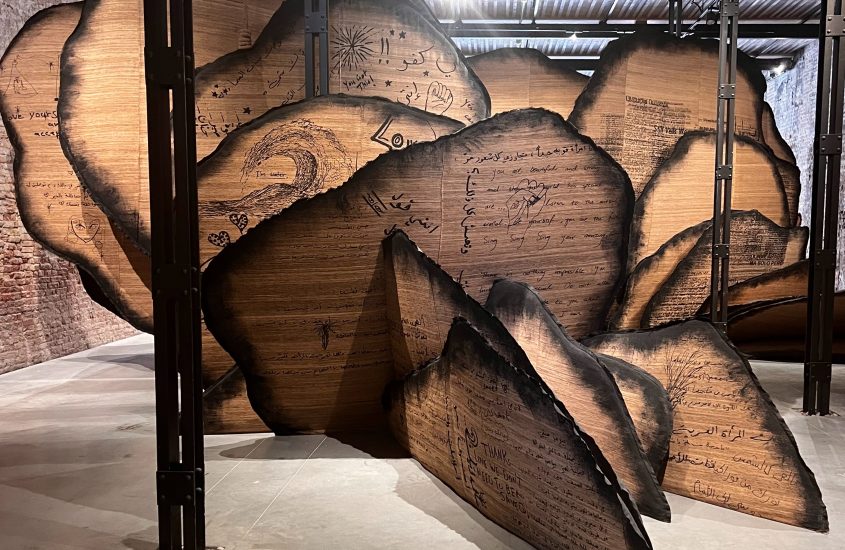
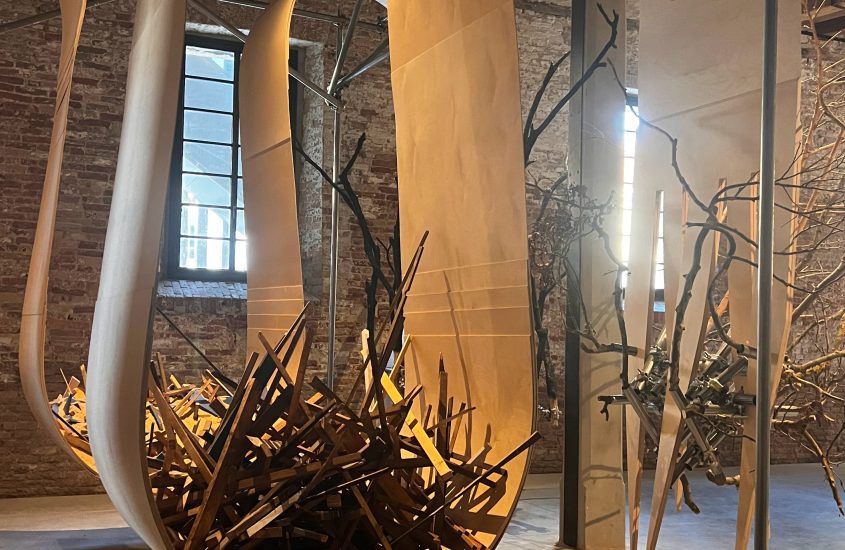
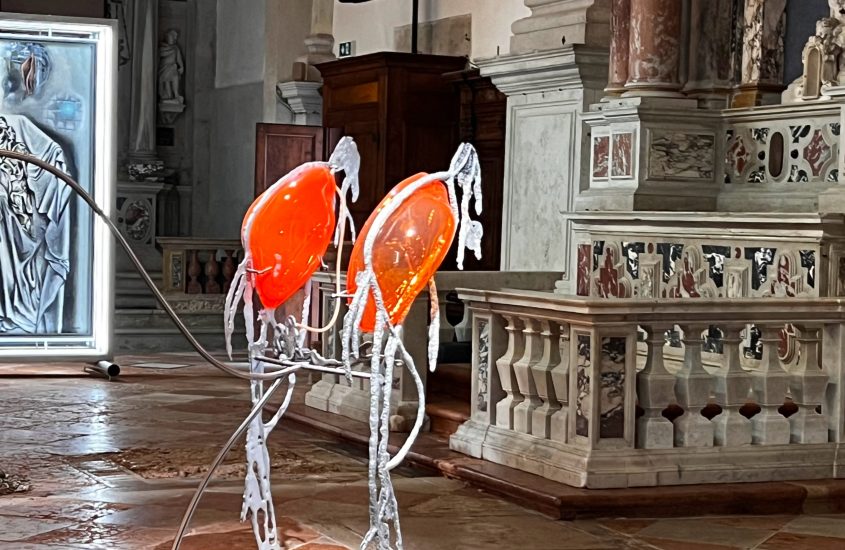
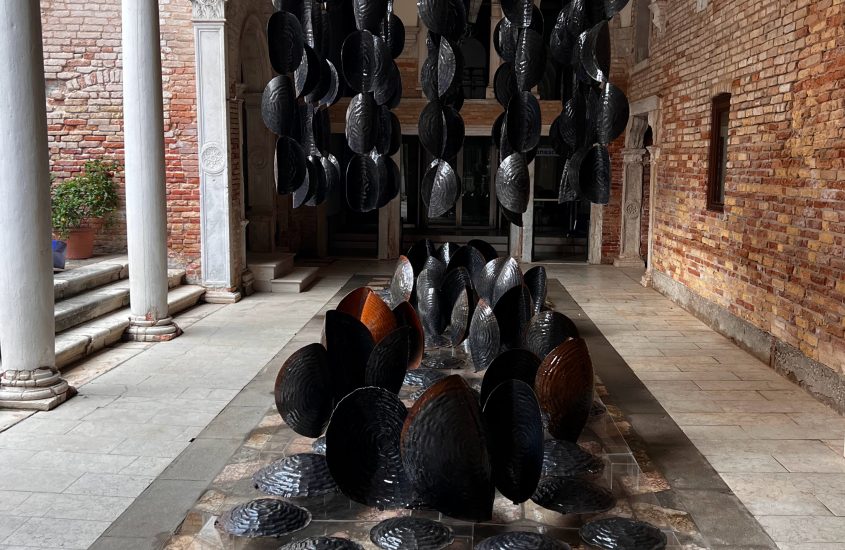
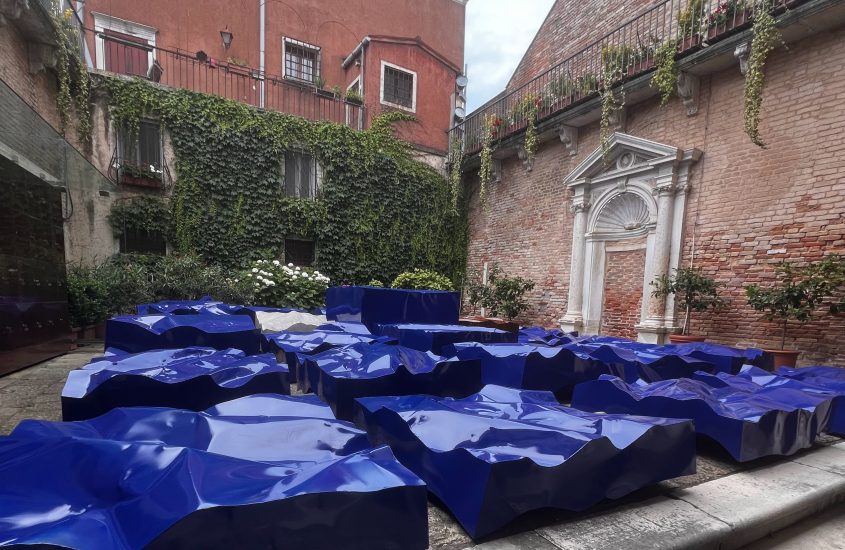
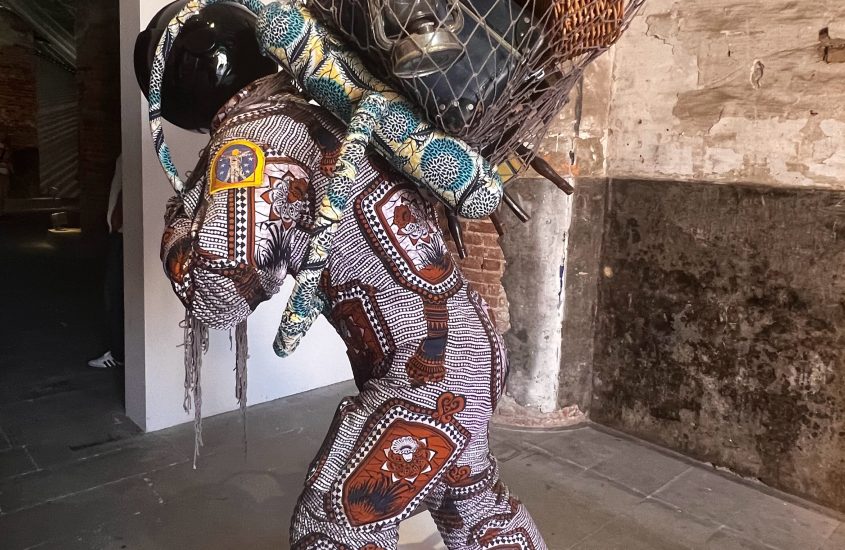
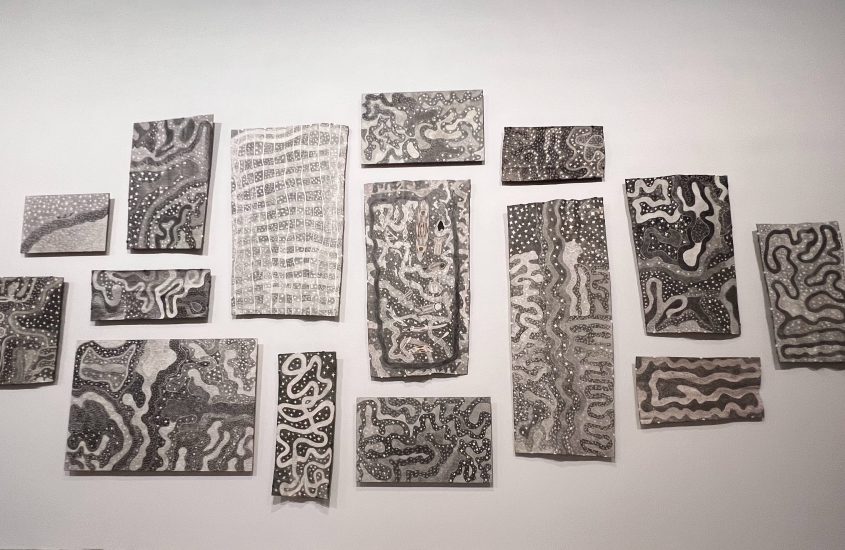
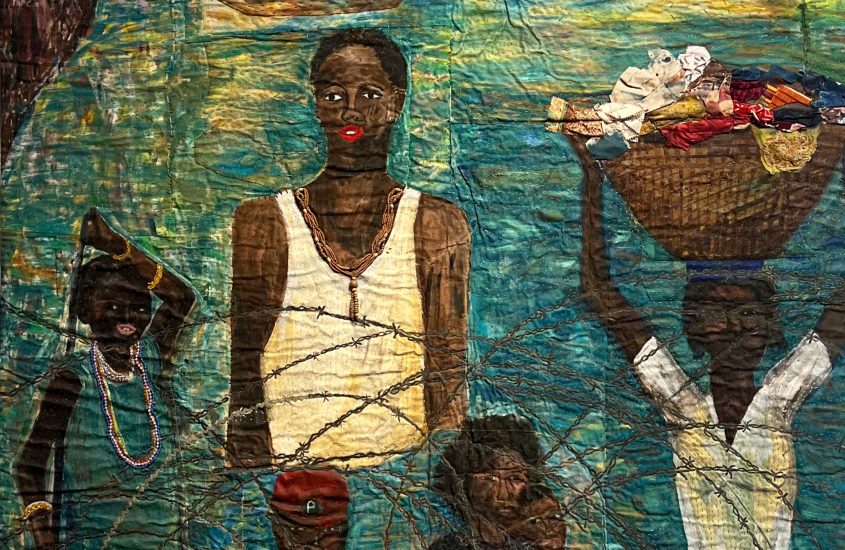
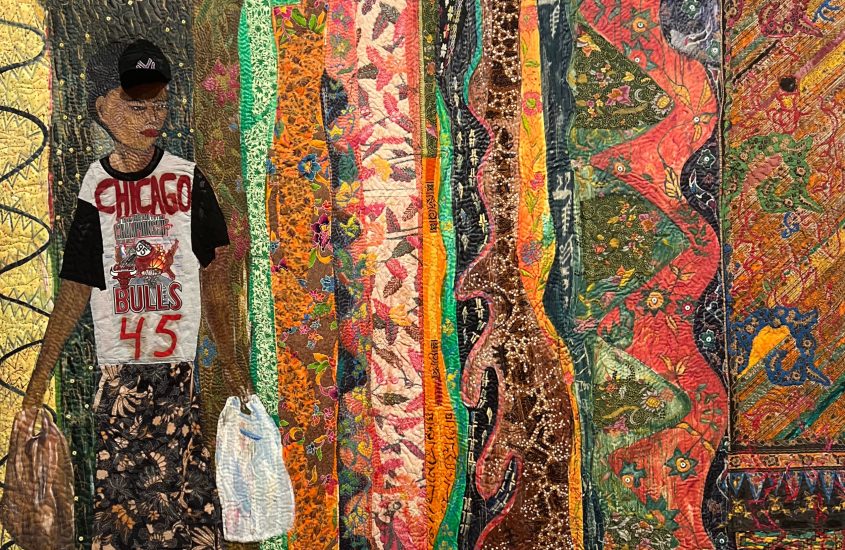
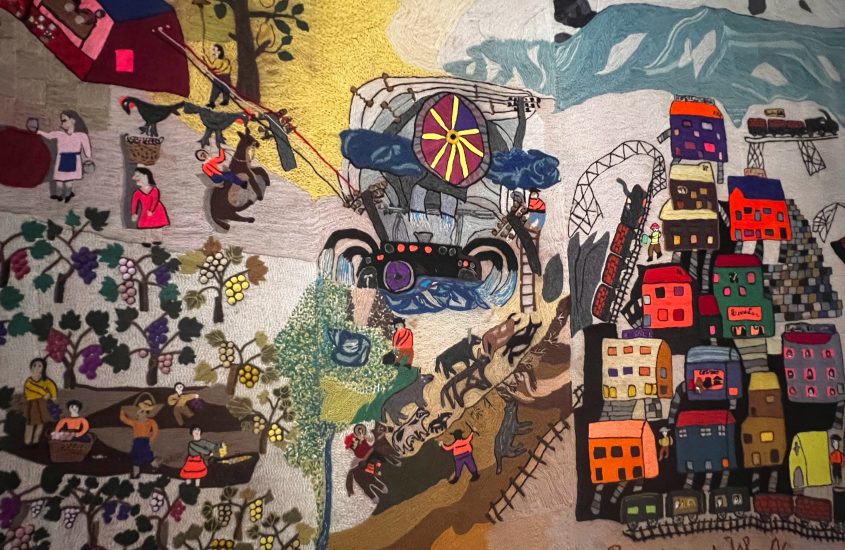
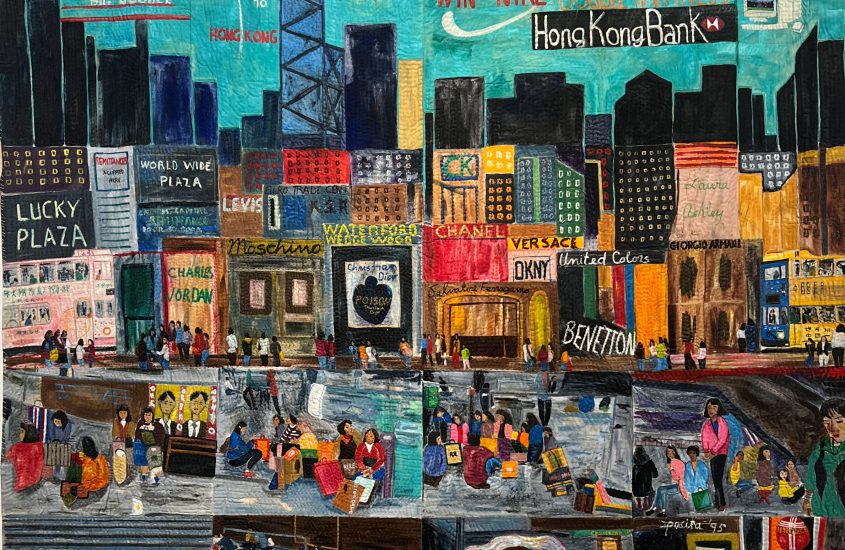
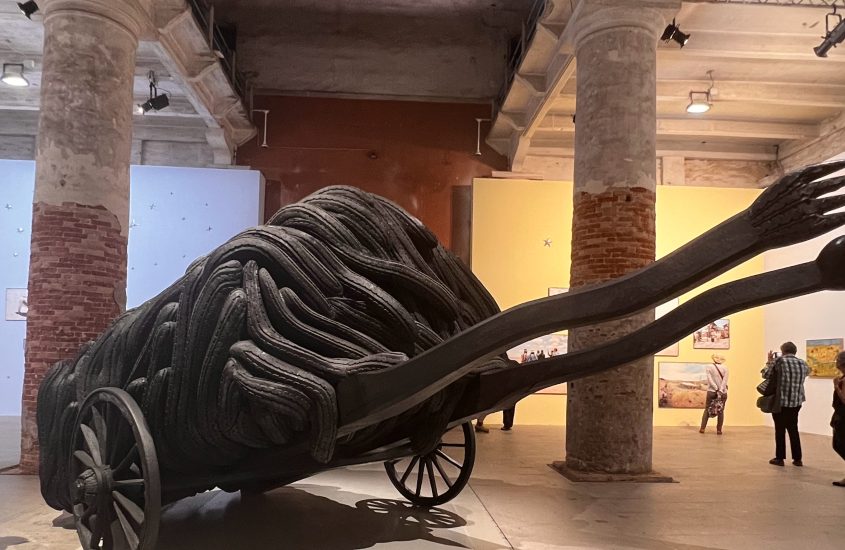

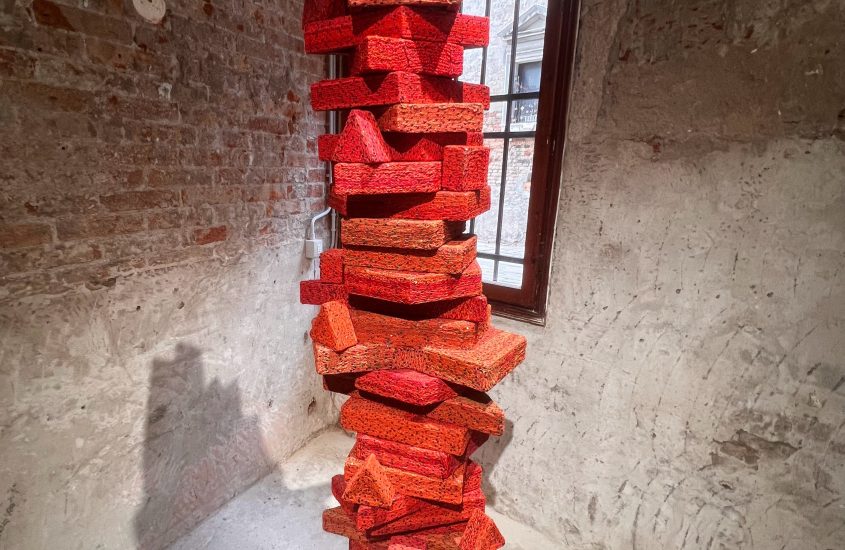
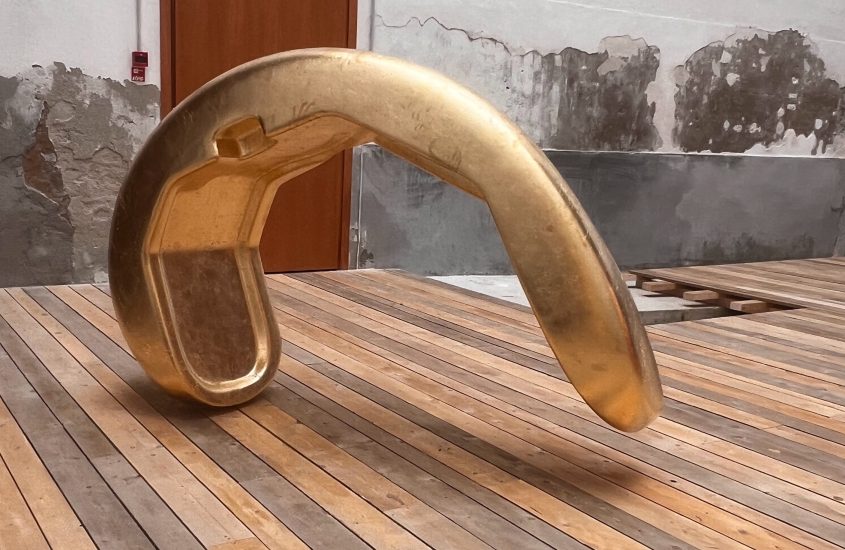

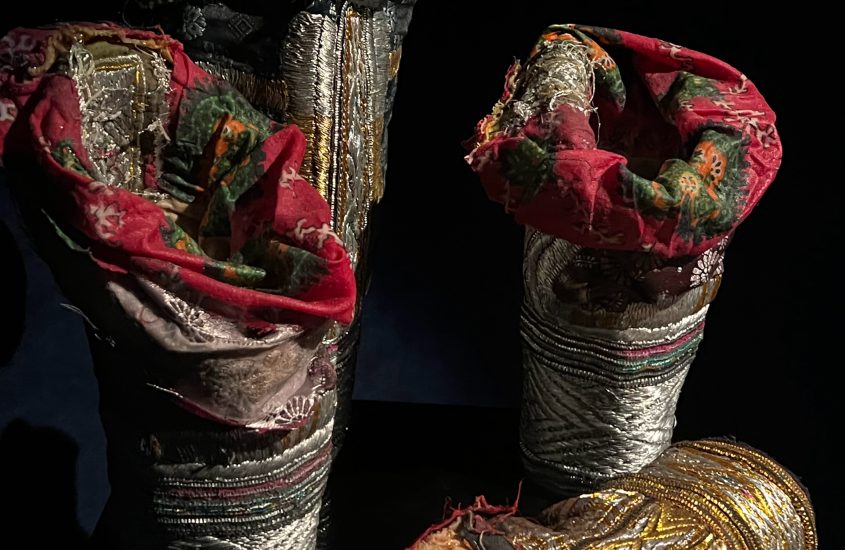
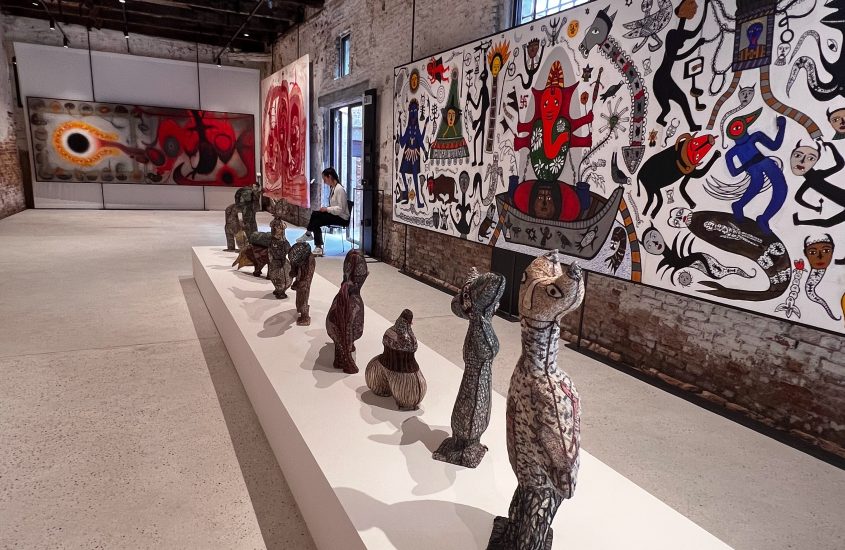
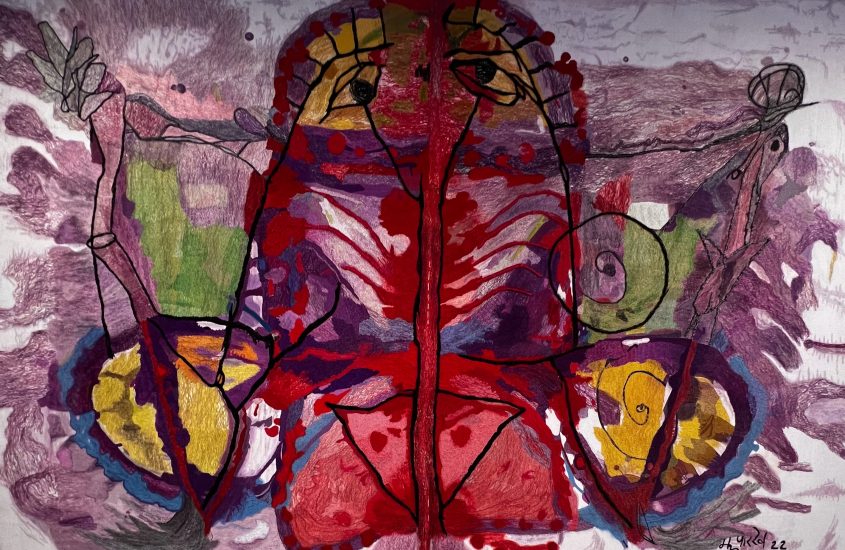
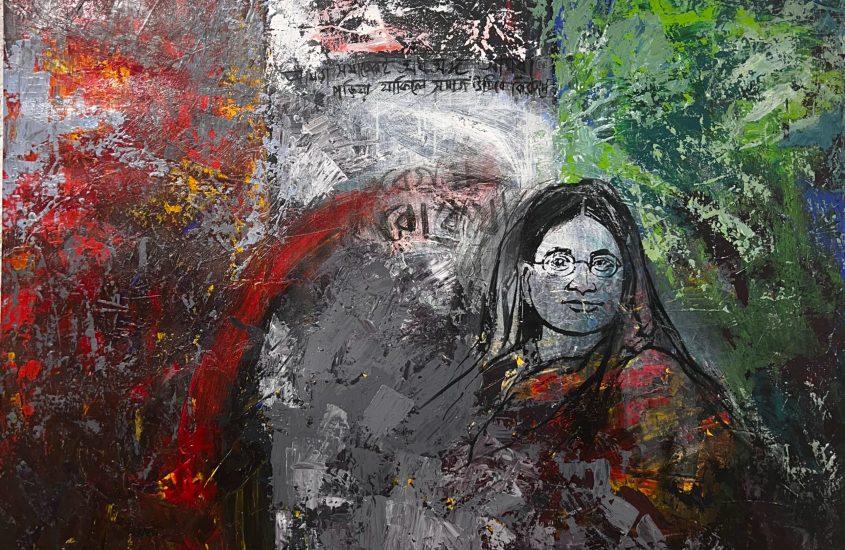
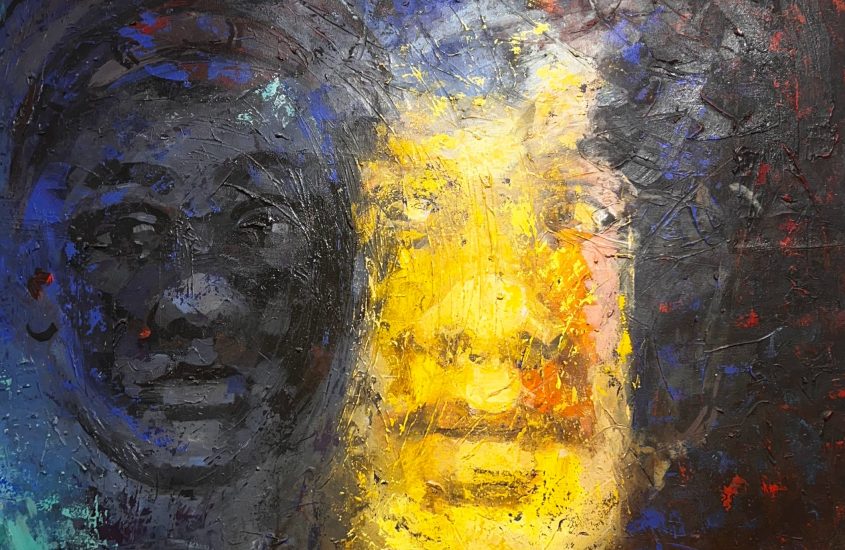
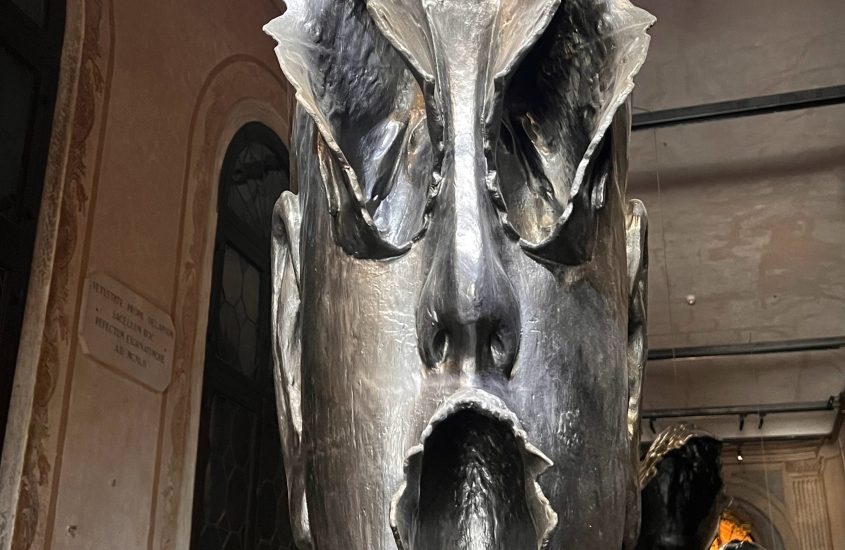
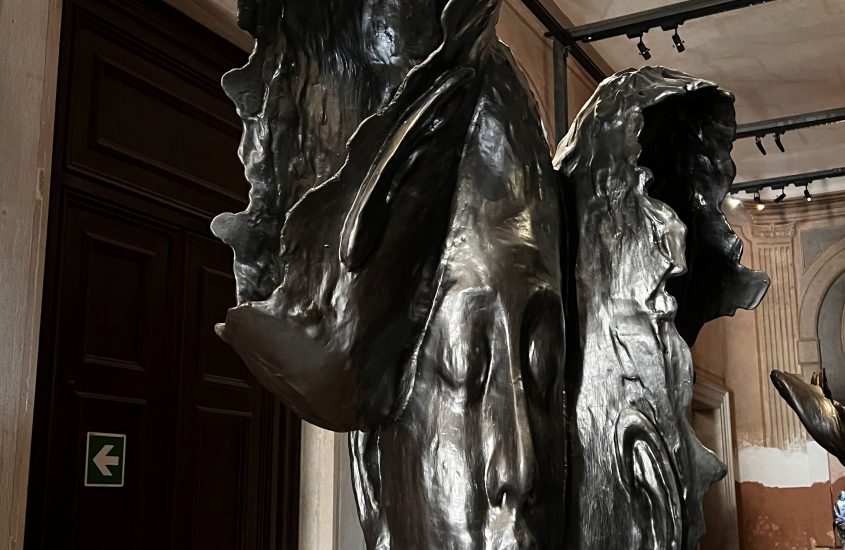
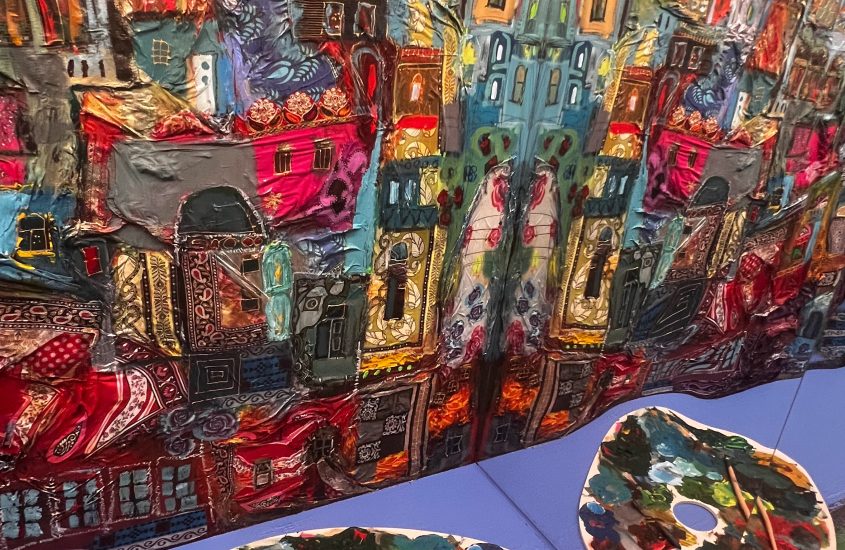
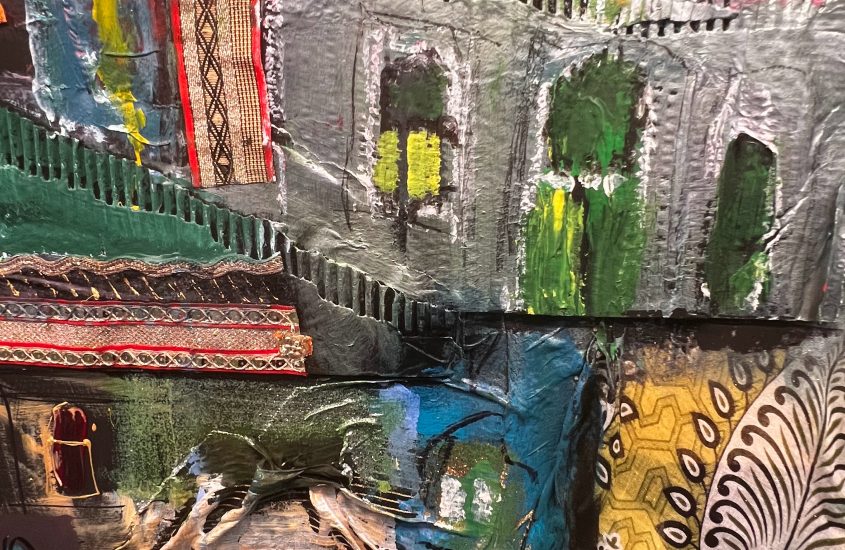
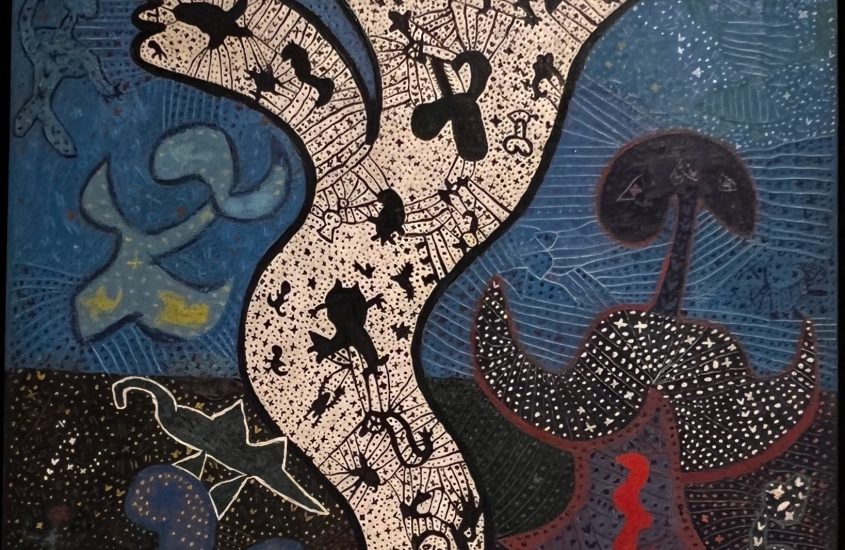
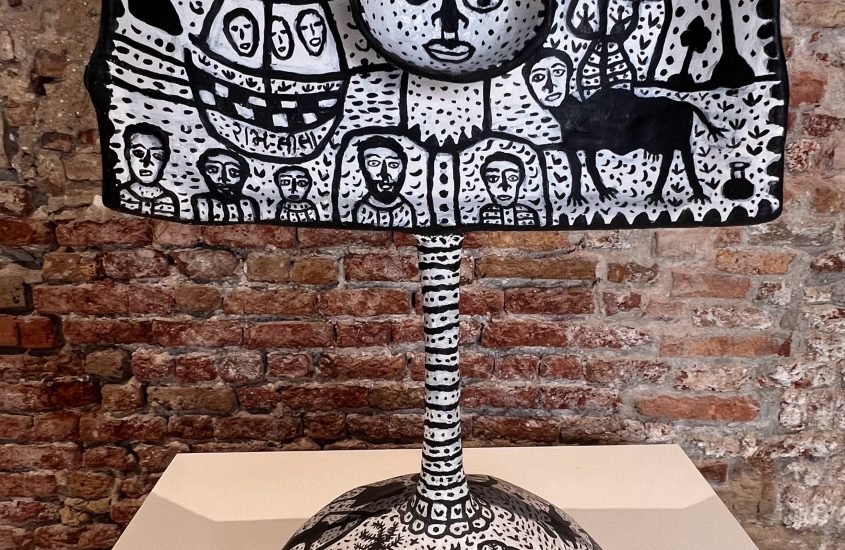
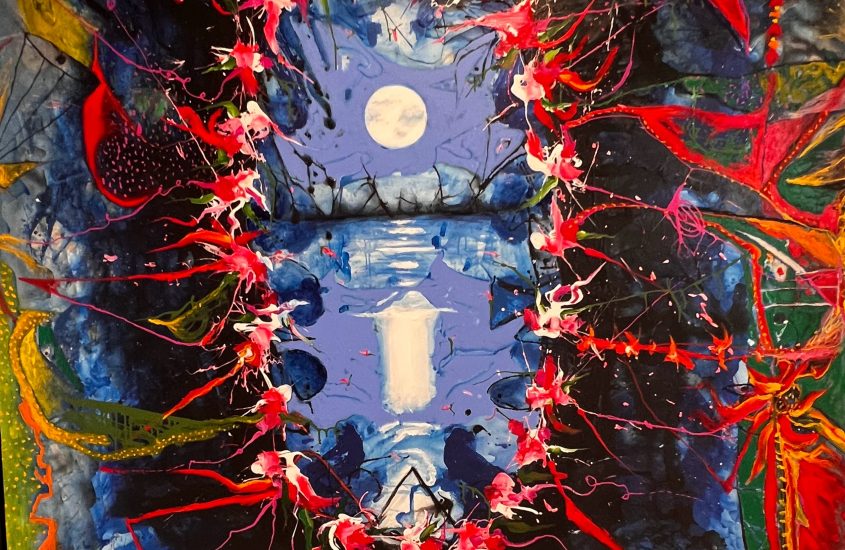
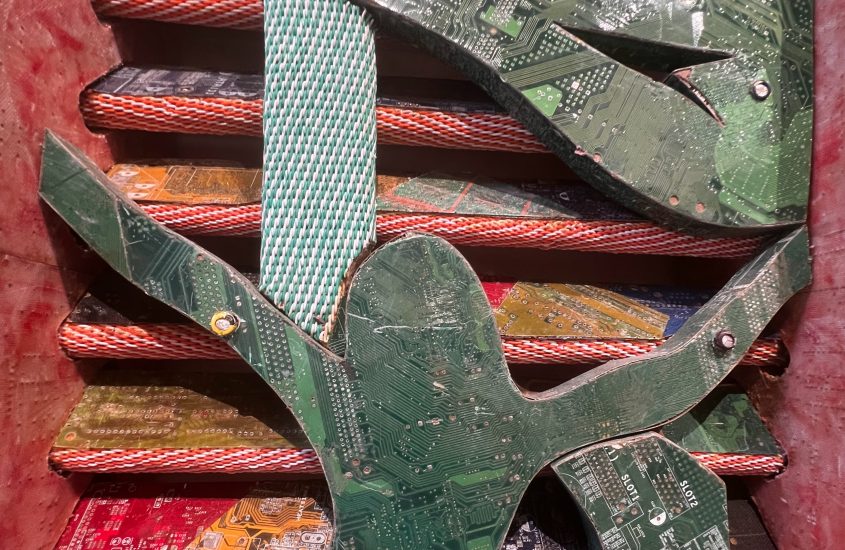
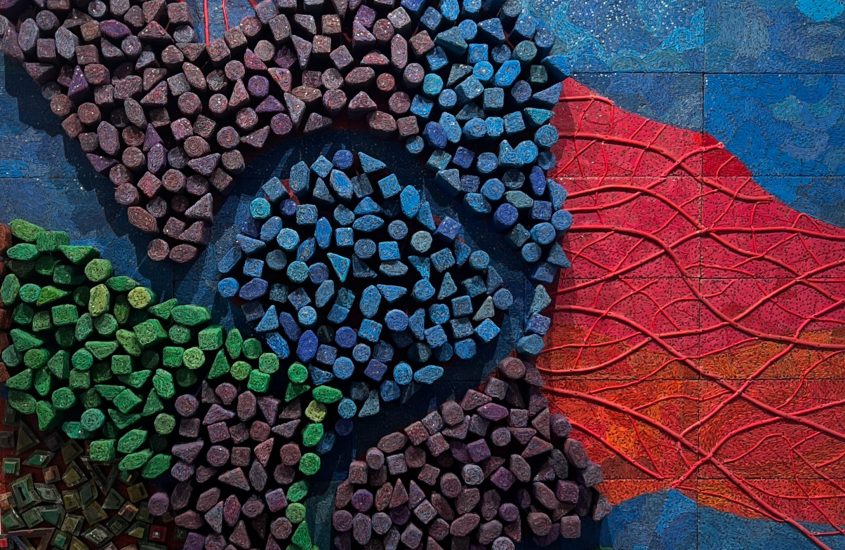
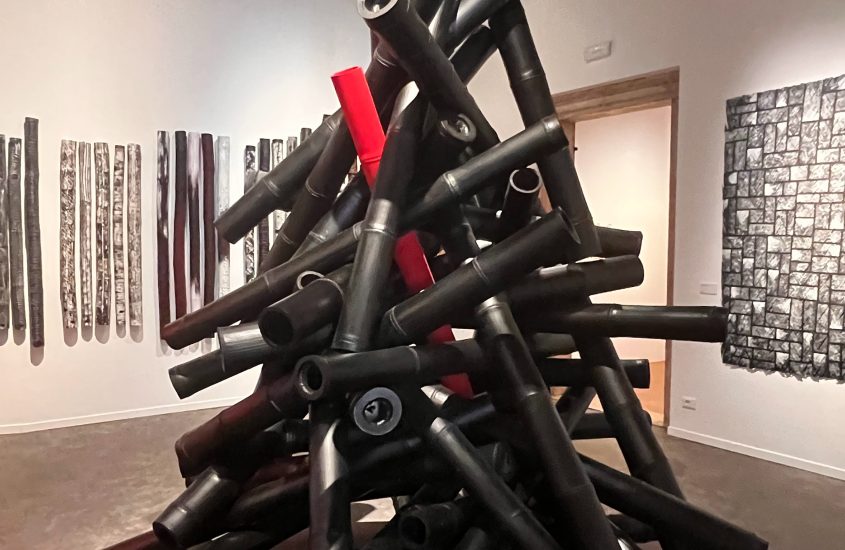
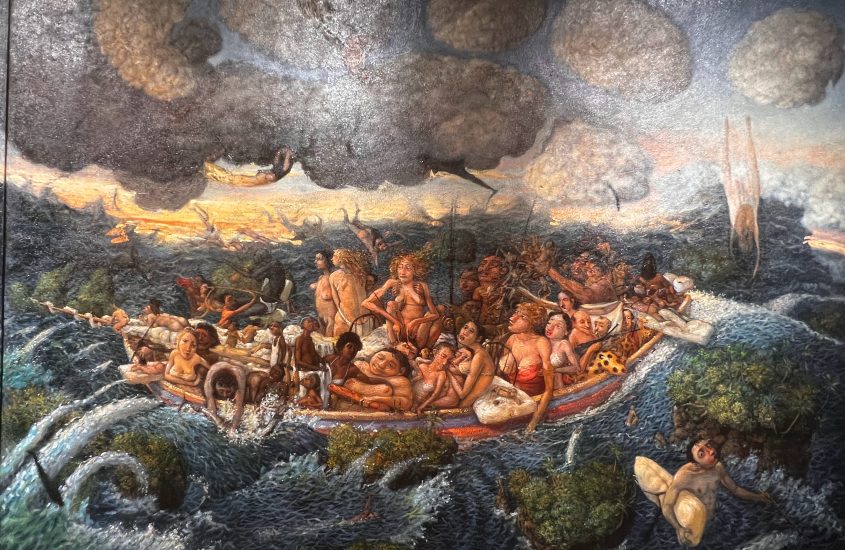
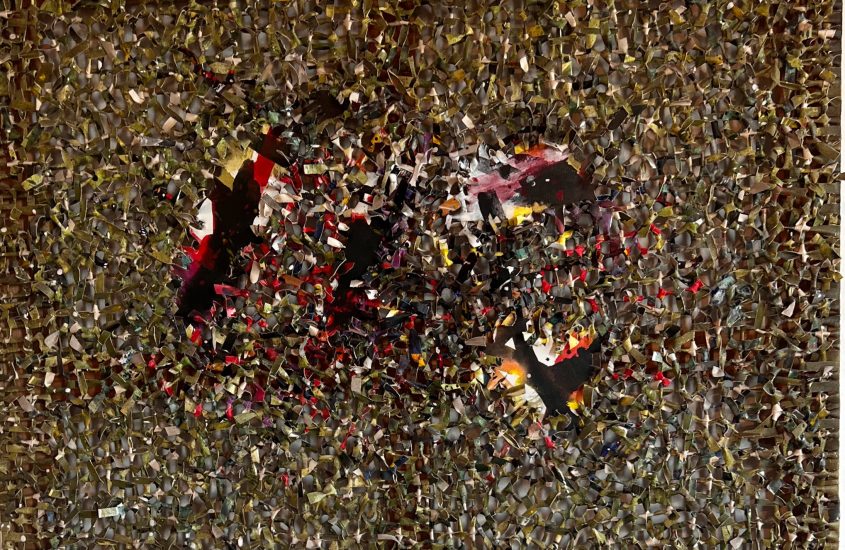
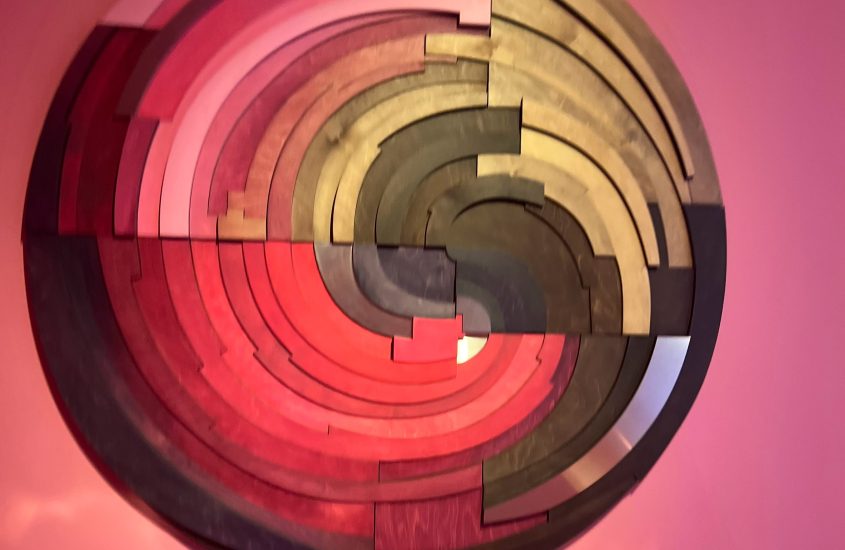
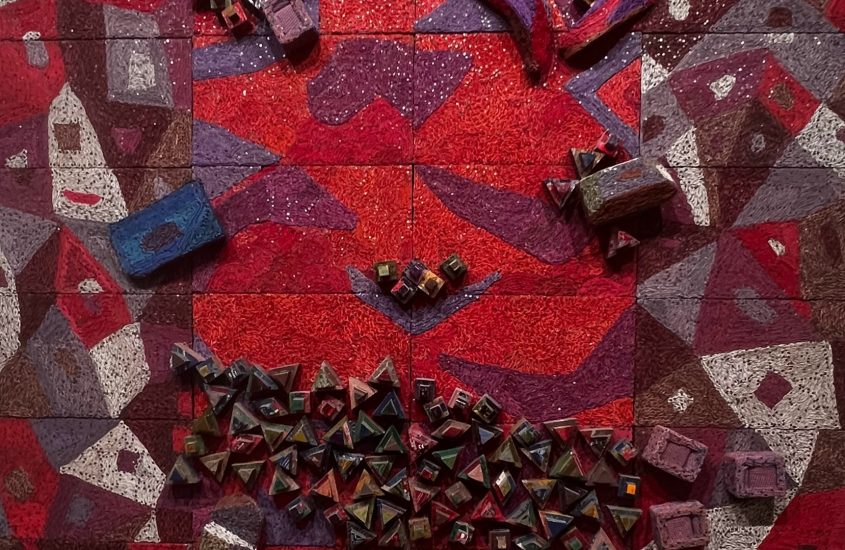

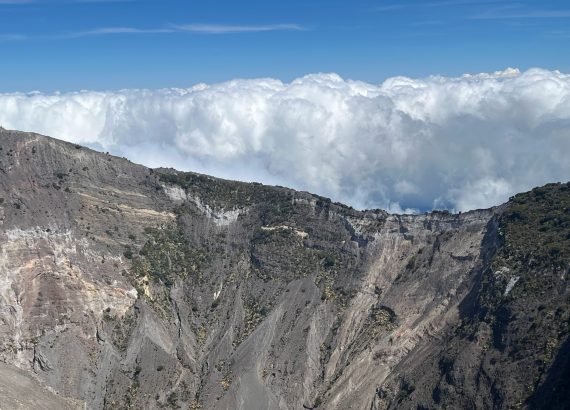
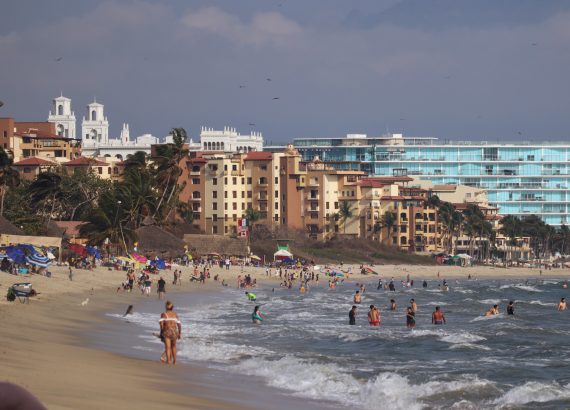
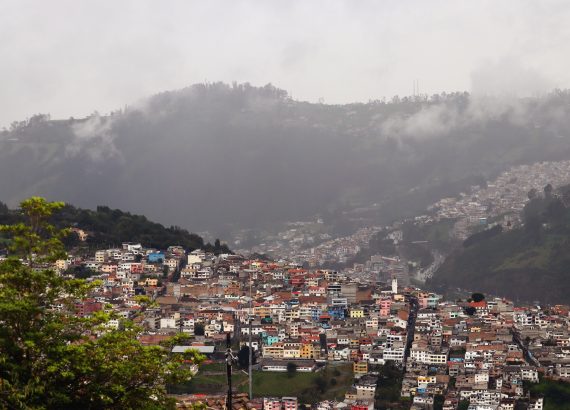
No Comments